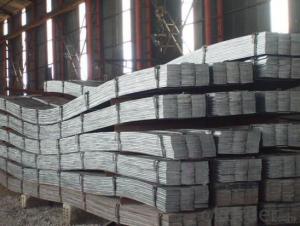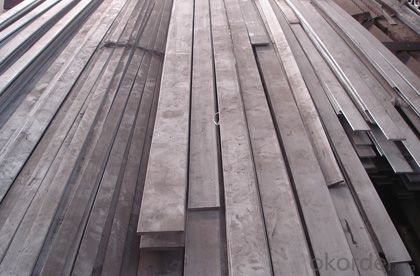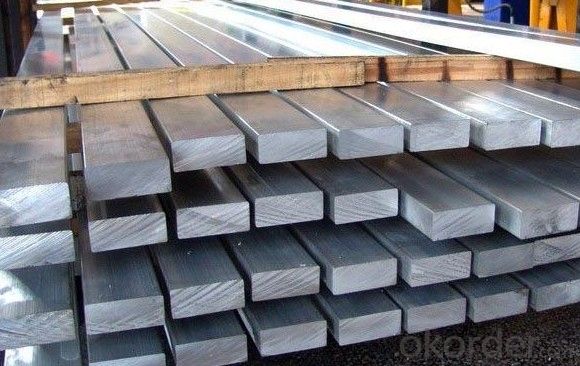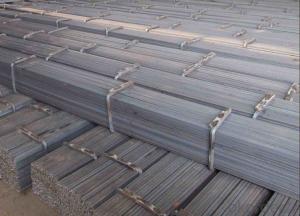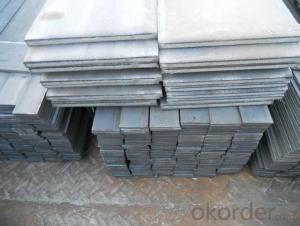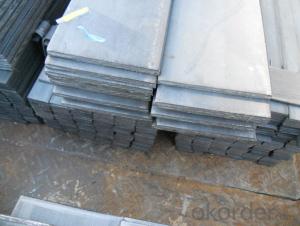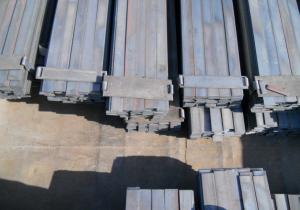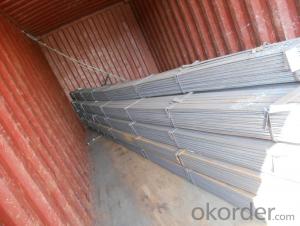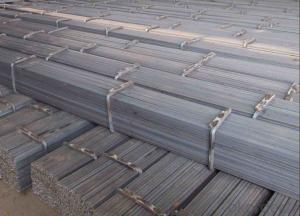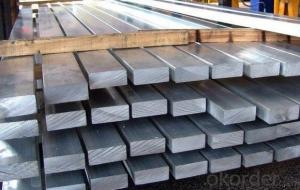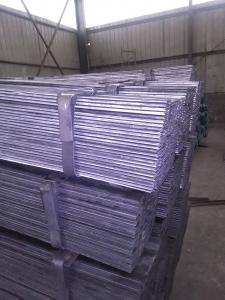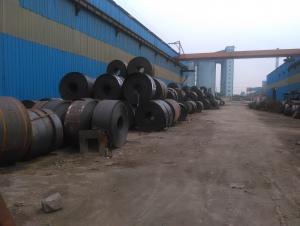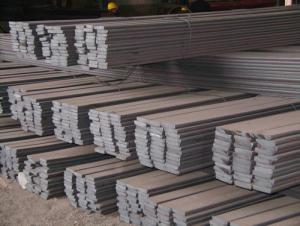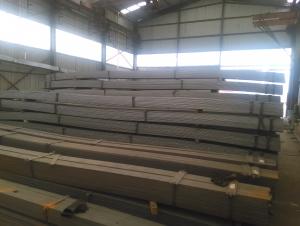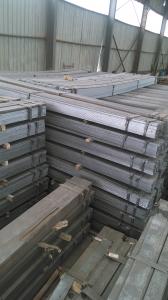Carbon steel flat bar in Grade Q235 for construction
- Loading Port:
- Tianjin
- Payment Terms:
- TT OR LC
- Min Order Qty:
- 10000 m.t.
- Supply Capability:
- 100000 m.t./month
OKorder Service Pledge
OKorder Financial Service
You Might Also Like
Product Description:
OKorder is offering carbon steel flat bar in Grade Q235 for construction at great prices with worldwide shipping. Our supplier is a world-class manufacturer of steel, with our products utilized the world over. OKorder annually supplies products to European, North American and Asian markets. We provide quotations within 24 hours of receiving an inquiry and guarantee competitive prices.
Product Applications:
Carbon steel flat bar are ideal for structural applications and are widely used in the construction of buildings and bridges, and the manufacturing, petrochemical, and transportation industries.
Product Advantages:
OKorder's Steel Flat Bar for construction are durable, strong, and resist corrosion.
Main Product Features:
· Premium quality
· Prompt delivery & seaworthy packing (30 days after receiving deposit)
· Corrosion resistance
· Can be recycled and reused
· Mill test certification
· Professional Service
· Competitive pricing
Product Specifications:
1. Size: 3*10mm~22*150mm
2. Material:Q195-235, SS400
3. factory direct sale
Size:3*10mm~22*150mm or as your requirment
Technics :hot rolled
Useage:used to make tools and machine parts, make room frame structure in construction
Falt steel bar is cross section for the rectangular with pure steel edge. The wide range is 12-300mm, thickness range is 4-60mm,It can be finished steel products, also can be used to do the blank pipe, roll thin with a thin slab, make tools and machine parts, make room frame structure in construction
FAQ:
Q3: How soon can we receive the product after purchase?
A3: Within three days of placing an order, we will begin production. The specific shipping date is dependent upon international and government factors, but is typically 7 to 10 workdays
Q5: Can stainless steel rust?
A5: Stainless does not "rust" as you think of regular steel rusting with a red oxide on the surface that flakes off. If you see red rust it is probably due to some iron particles that have contaminated the surface of the stainless steel and it is these iron particles that are rusting. Look at the source of the rusting and see if you can remove it from the surface.

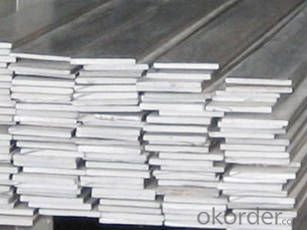
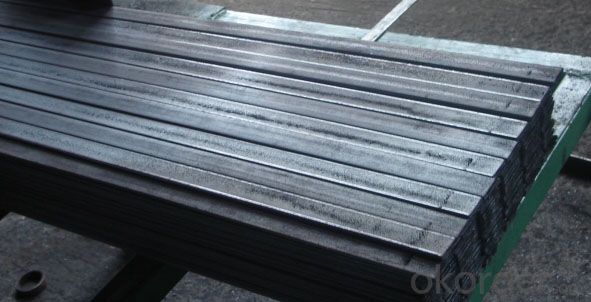
- Q: How do steel flat bars compare in terms of strength and durability?
- Steel flat bars are known for their exceptional strength and durability. They are one of the strongest and most durable materials available in the construction industry. Compared to other materials like wood or aluminum, steel flat bars possess a significantly higher strength-to-weight ratio, making them an ideal choice in applications where structural integrity is of utmost importance. The strength of steel flat bars is derived from their composition and manufacturing process. Steel is an alloy composed primarily of iron and carbon, with trace amounts of other elements. The carbon content in steel determines its strength, with higher carbon content resulting in greater strength. Additionally, the manufacturing process of steel flat bars involves hot rolling, cold rolling, or extrusion, which further enhances their strength by aligning the grains of the steel. In terms of durability, steel flat bars are highly resistant to corrosion, weathering, and wear. This is due to their inherent properties, as well as various protective coatings that can be applied to the surface of the bars, such as galvanization or painting. These coatings provide an additional layer of protection against rust and other forms of deterioration, ensuring the longevity and durability of steel flat bars in various environments. Furthermore, steel flat bars are capable of withstanding heavy loads, impacts, and extreme temperatures without compromising their structural integrity. This makes them suitable for a wide range of applications, including construction, manufacturing, transportation, and infrastructure projects. In conclusion, steel flat bars excel in terms of strength and durability when compared to other materials. Their high strength-to-weight ratio, resistance to corrosion and wear, and ability to withstand heavy loads and extreme conditions make them a reliable and long-lasting choice for various applications.
- Q: How strong are steel flat bars?
- Steel flat bars are known for their strength and durability. The strength of steel flat bars can vary depending on the grade and composition of the steel used. Steel flat bars are commonly made from mild steel, which has a relatively low carbon content, making it more ductile and easier to work with. Mild steel flat bars have a moderate strength and are suitable for various applications such as construction, manufacturing, and fabrication. On the other hand, high-strength steel flat bars, such as those made from alloy steels or heat-treated steels, have significantly higher strength properties. These types of steel flat bars are specifically designed to withstand heavy loads, resist deformation, and provide structural support in demanding applications. They are commonly used in industries such as construction, automotive, and aerospace. Overall, steel flat bars are generally considered to be strong and capable of withstanding substantial amounts of force and weight. However, it is important to choose the appropriate grade and size of steel flat bar for the intended application to ensure optimal strength and performance. Consulting with a structural engineer or steel supplier can help determine the most suitable type of steel flat bar for a particular project.
- Q: What are the different types of surface finishes for titanium steel flat bars?
- The different types of surface finishes for titanium steel flat bars include mill finish, brushed finish, polished finish, and coated finish.
- Q: Can steel flat bars be used for manufacturing architectural facades or cladding?
- Architectural facades or cladding can be manufactured using steel flat bars, which are versatile and durable. Steel is a popular choice due to its strength and aesthetic appeal. These flat bars can be easily shaped and fabricated to meet specific design requirements, making them suitable for various architectural applications. There are several advantages to using steel flat bars for architectural facades or cladding. Firstly, steel offers excellent structural properties, providing stability and resistance against external forces like wind or seismic activity. This makes it a dependable option for buildings that require a strong and sturdy exterior. Furthermore, steel flat bars can be finished in different ways to enhance their visual appeal. They can be painted, powder coated, or left untreated for an industrial look. Steel's natural gray or metallic appearance can complement a wide range of architectural styles, from modern to traditional. Additionally, steel flat bars are highly resistant to corrosion and weathering, making them ideal for exterior applications. With proper maintenance, steel facades or cladding can withstand harsh weather conditions and maintain their appearance for many years. However, it is crucial to consider specific project requirements and consult with architects, engineers, and manufacturers to ensure that the chosen steel flat bars meet the necessary specifications and standards for architectural facades or cladding.
- Q: What is the maximum thickness available for steel flat bars?
- The maximum thickness available for steel flat bars can vary depending on the manufacturer and the specific grade of steel being used. However, in general, steel flat bars can be found in thicknesses ranging from 1/8 inch to 1 inch or even thicker. It is important to note that thicker steel flat bars are typically less common and may require special ordering or fabrication. Additionally, certain specialized steel alloys or custom-made flat bars may have even greater maximum thicknesses available.
- Q: Can steel flat bars be used for manufacturing automotive parts or components?
- Yes, steel flat bars can be used for manufacturing automotive parts or components. Steel flat bars are commonly used in the automotive industry for various applications such as brackets, supports, frames, and reinforcements. The high strength and durability of steel make it an ideal material for automotive manufacturing, as it can withstand the heavy loads and demands of the vehicles. Additionally, steel flat bars can be easily machined, welded, and formed into different shapes and sizes, allowing for customization and versatility in automotive component production.
- Q: What are the applications of steel flat bars in the automotive industry?
- Steel flat bars are extensively utilized in the automotive industry due to their wide range of applications and numerous benefits. Some of the primary uses of steel flat bars in the automotive sector include: 1. Chassis and Frame Components: Automobiles often incorporate steel flat bars in the construction of chassis and frame components. These bars offer the necessary strength and rigidity to support the vehicle's weight and endure various forces and vibrations. 2. Suspension Systems: Suspension systems, including leaf springs and torsion bars, are fabricated using steel flat bars. These components assist in absorbing shocks and vibrations, thereby enhancing the overall ride quality and stability of the vehicle. 3. Braking Systems: Steel flat bars are integral to the construction of various braking system components, such as brake shoes and brake rotors. They provide the essential strength and durability to withstand the high temperatures and pressures associated with braking. 4. Safety Features: Steel flat bars find application in the manufacturing of safety features like roll bars and roll cages. These components offer additional protection to the vehicle's occupants in the event of a rollover or collision, thereby improving overall safety. 5. Bumpers and Grilles: Automobile bumpers and grilles are often fabricated using steel flat bars. These bars provide impact resistance and safeguard the engine and other vital components located at the front and rear ends of the vehicle. 6. Body Panels: Steel flat bars are extensively used in the construction of body panels, such as door frames, roof rails, and window frames. Their strength and stability contribute to maintaining the structural integrity of the vehicle's body. 7. Exhaust Systems: The manufacturing of exhaust systems, including exhaust pipes and mufflers, incorporates steel flat bars. These bars offer high-temperature resistance, corrosion resistance, and durability, ensuring efficient exhaust gas flow and reducing noise levels. In conclusion, steel flat bars play a vital role in the automotive industry by providing strength, durability, and reliability to various components and systems. They significantly contribute to the overall performance, safety, and longevity of automobiles.
- Q: How do you determine the creep resistance of a steel flat bar?
- Typically, when assessing the creep resistance of a steel flat bar, a series of steps is followed. First and foremost, it is crucial to grasp the concept of creep. Creep refers to the gradual deformation or change in shape that transpires in a material over time when subjected to a constant stress or load. This aspect is particularly vital when dealing with materials like steel, especially in applications involving prolonged exposure to high temperatures or long-term stress. To evaluate the creep resistance of a steel flat bar, a commonly employed technique is the implementation of a creep test. This method entails subjecting the bar to a continuous load or stress over an extended period, typically at elevated temperatures that replicate the conditions it will encounter in its intended use. Throughout the test, the alteration or elongation of the flat bar is measured over time. By dividing the change in length by the elapsed time, the creep rate, which represents the rate of deformation, is calculated. This serves as valuable information regarding the material's capacity to combat creep under specific circumstances. The test usually encompasses the application of a constant load or stress to the steel flat bar, along with exposure to high temperatures for a predetermined duration, often spanning several hundred or thousand hours. The selection of temperature and stress levels depends on the application requirements or established industry standards. Moreover, several factors come into play when determining the creep resistance, such as the steel's composition, including its alloying elements and impurities. Therefore, a thorough analysis of the chemical composition of the steel flat bar is imperative in assessing its ability to resist creep. Furthermore, the microstructure of the steel must be taken into account. Microstructural characteristics like grain size, distribution, and orientation significantly impact the creep resistance. For example, steel with a fine and uniform grain structure tends to exhibit superior resistance to creep compared to those with larger grains. Ultimately, a comprehensive approach is necessary to determine the creep resistance of a steel flat bar. This entails conducting a creep test, thoroughly examining the chemical composition, and evaluating the microstructure. By acquiring an in-depth understanding of the material's behavior under sustained loads and high temperatures, informed decisions can be made regarding its application in various industries.
- Q: How do steel flat bars contribute to the overall versatility of structures?
- The versatility of structures is enhanced by steel flat bars in several ways. Firstly, their flat and uniform shape allows for precise construction, making them easy to work with and manipulate. This versatility in shape and size enables steel flat bars to be utilized in various structural applications. Secondly, steel flat bars possess an excellent strength-to-weight ratio, making them lightweight yet capable of providing significant structural support. This quality makes them an ideal option for structures that require both strength and efficiency, such as bridges, buildings, and industrial frameworks. Additionally, steel's high tensile strength prevents bending and deformation, enhancing the durability and stability of structures. Moreover, steel flat bars can be easily joined together through welding or bolting, facilitating efficient connections and the creation of complex structures. This flexibility in joining methods allows architects and engineers to design structures that are not only strong and stable, but also visually pleasing. Furthermore, steel flat bars can be easily cut and shaped to fit specific design requirements, making them suitable for various architectural styles and functions. Whether it is for columns, beams, braces, or supports, steel flat bars can be customized to meet the unique demands of different construction projects. Additionally, steel flat bars exhibit excellent corrosion resistance, which is vital for structures exposed to harsh environmental conditions like coastal areas or industrial settings. This resistance to rust and deterioration ensures the longevity and reliability of structures, minimizing maintenance costs and extending their lifespan. In conclusion, steel flat bars contribute to the overall versatility of structures through their ease of workability, high strength-to-weight ratio, efficient joinability, customizable shape, and corrosion resistance. These attributes make steel flat bars the preferred choice for architects, engineers, and construction professionals, enabling them to create versatile, efficient, and durable structures.
- Q: Are steel flat bars prone to warping or bending?
- Yes, steel flat bars are prone to warping or bending under certain conditions.
Send your message to us
Carbon steel flat bar in Grade Q235 for construction
- Loading Port:
- Tianjin
- Payment Terms:
- TT OR LC
- Min Order Qty:
- 10000 m.t.
- Supply Capability:
- 100000 m.t./month
OKorder Service Pledge
OKorder Financial Service
Similar products
Hot products
Hot Searches
Related keywords
